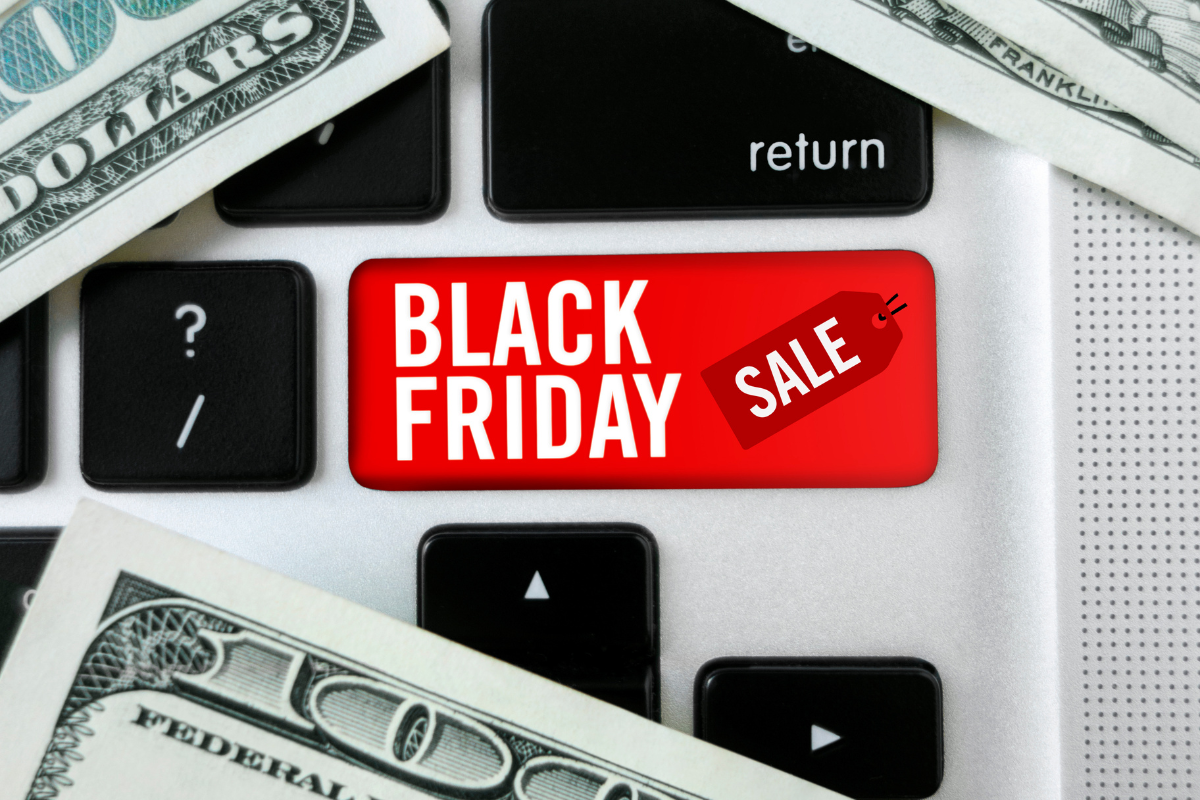Turkey, problematic family members, and football may feel far off, but as a business owner, Thanksgiving and the biggest consumer day in the retail calendar may as well be right around the corner. Black Friday, originating in the U.S., has become a day-after-sometimes-week-before-or-day-of Thanksgiving tradition.
For many, it kicks off the holiday shopping season. For B2B and service-based business owners, it can be what closes out their calendar year on a high note. Each year, service-based businesses try to put together deals and discounts that will entice their audiences to spend and sign on. Planning an effective marketing strategy can’t be something you put on the back burner until October or November. Start thinking now about how you will connect with your audience, nurture engagement, and lead them to make a decision about your brand on the big day. Keep reading if you’re interested in shaping an effective, well-thought-out marketing strategy.
Successful brands are intentional with their plan. Some brands focus on pushing before Black Friday, after or a combination of both.

Pre-Black Friday marketing is all about anticipation. It builds hype and teases the audience. Brands use email campaigns, social media posts, podcasts and online ads. The goal with this strategy is to get your audience excited about your service and the fact they can take advantage of your service at a discount.
Post-Black Friday marketing is aimed at those who want to take advantage of extended deals and launches. You’re basically keeping the party going and promoting themed sales days (Small Business Saturday, Cyber Monday, and Giving Tuesday). Brands that adopt this strategy are trying to capitalize on consumer spending momentum.
Some brands do a combination of both of these strategies to maximize brand awareness, lead generation and sales.
Pros & Cons of Pre-Black Friday Marketing
Pre-Black Friday marketing can provide several advantages. Starting promotions early allows you to spread out demand. This can be helpful if all of your systems aren’t yet automated. You don’t want to get bogged down with manual tasks connected to client management.
Building hype also gets clients engaged with your brand. Sales events like Early Bird sales or Grey Thursday (Thanksgiving Day sales) can attract deal-seekers who want to beat the rush. Extending deals over multiple days or weeks before increases client convenience and allows you to test promotions before the big day. Finally, this approach to marketing helps brands generate valuable data through email sign-ups, site traffic, and engagement that can inform future marketing efforts.
One major challenge of this marketing approach is the risk of diluting the impact of Black Friday itself. Starting deals too early can spread demand thin and decrease the sense of urgency. Understand you walk a fine line between building anticipation and giving away too much value before the biggest sales day. These promotions can also mean additional time and effort and possibly marketing dollars from you and your team compared to concentrating activity on Black Friday alone. Analyze if early promotions are truly increasing revenue or just shifting sales earlier.
There is also the challenge of effectively managing hype over a longer time frame without letting the momentum drop out too soon. You don’t want to annoy your audience. Extremely early deals can feel like you’re jumping the gun.
Overall, ensure your strategy generates genuine incremental value and excitement, and not eating into your sales and success.
Pros & Cons of Post-Black Friday Marketing
As previously mentioned, this marketing approach capitalizes on the momentum generated by the big day. If your audience missed out on deals because they’re just entering their customer journey with you, you can encourage them to purchase or sign-on.
Online-focused promotions are key for B2B and service-based businesses. (Cyber Monday now rivals Black Friday in scale.) Sales after the day are another way to spread out demand and your audience will be grateful to still be able to take advantage of your services and deals. You can offer deeper discounts and more valuable bundles as well.
With this approach, you’re looking at increased revenue, higher client retention, and valuable insights about your audience and clients and their preferences.
A major challenge for this type of marketing is sustaining momentum and excitement after the frenzy dies down. As each day passes, brand mindshare and urgency diminish. Post-Black Friday promotions also have to compete with rising Christmas shopping activities. Consumers may suffer from deals fatigue having just splurged on Black Friday, making them less likely to respond to subsequent sales. Brands have to strategically plan, time, and space out promotions to avoid the perception of constant discounting.
Online-specific deals require fast and reliable e-commerce operations. Data shows the further into December retailers run promotions, the steeper discounts are needed to generate interest. So post-Black Friday marketing needs to walk a fine line between capitalizing on momentum and stretching it too thin.
A Hybrid Approach
If you’re looking to incorporate both strategies in your marketing, you’re looking to maximize the benefits of both. Building anticipation engages your audience early while post-Black Friday promotions extend the sales season.
The combined hype results in greater awareness. A hybrid strategy also allows brands to test promotions and deals to better calibrate Black Friday itself. Having both pre and post sales widens the revenue window. The largest downside is increased marketing spend from extending promotions over a longer timeframe. Business owners also need to ensure the extended promotions don’t result in deal fatigue or diminishing returns from the target audience. Managing time and logistics is more complex with prolonged sales, so you definitely need to plan ahead.
Overall, a balanced and coordinated hybrid strategy can amplify Black Friday success. But it requires careful planning to avoid excessive cannibalization or conflicting messaging across pre and post events.

Key Takeaways
– Black Friday kicks off the holiday shopping season and is an important sales day for many businesses.
– There are three main marketing approaches: pre-Black Friday, post-Black Friday, and a hybrid strategy.
– Pre-Black Friday builds hype and anticipation with early deals and promotions. Post-Black Friday extends deals to capitalize on shopping momentum. The hybrid approach combines both.
– Benefits of pre-Black Friday include spreading out demand, generating excitement, and collecting client data. Challenges include diluting Black Friday impact and increased marketing costs.
– Post-Black Friday benefits include capitalizing on momentum and reaching missed consumers. Challenges include declining urgency and deal fatigue.
– The hybrid approach maximizes benefits but requires careful planning to avoid deal fatigue or conflicting messaging.
– Overall, brands must strategically choose and balance pre, post or hybrid marketing to make the most of the critical Black Friday spending period.

Each of these strategies have pros and cons. Evaluate your brand’s needs, goals, and circumstances and choose the strategy or strategies that work for you. Remember, smart business owners make decisions based on data.
Get the data you need to market your deals by getting a Vivid Brand Audit to see how your brand is showing up or book your FLAUNT Your Brand VIP Experience to make sure your branding is on point.

